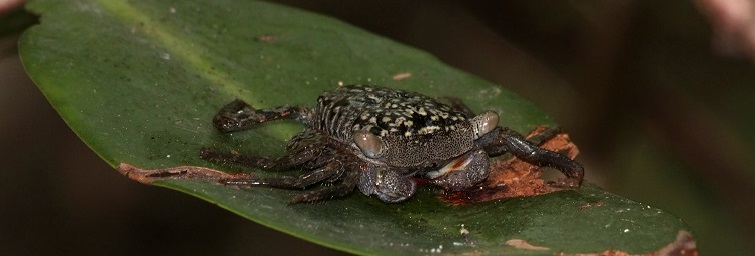Facts
- The Aratus pisonii, unlike other crabs, does not breathe air. It gains its oxygen by creating a thin film of water over an expansion of the carapace covering the gills (Smithsonian, 2009).
- Dependent upon carapace width, the female tree crab can hold up to 35,000 eggs (Smithsonian, 2009).
- Sex of the tree crab is determined by examination of the abdomen, with females exhibiting a more broad abdomen to hold its eggs (Smithsonian, 2009).
- Males have much larger and developed claws that they use for force during encounters with other crabs regarding mating or territorial disputes (Smithsonian, 2009).
- Sharp tips near the end of the mangrove tree crabs legs allow for the ability to climb the mangrove trees, as well as other challenging surfaces (Smithsonian, 2009).
- The tree crab tends to migrate vertically according to what is occurring in its surroundings. It tends to spend its time during high tide up in the tree canopies and during low tide, it ventures along the shore (Smithsonian, 2009).
- Aratus pisonii is the currently the only species within the genus Aratus (Smithsonian, 2009).
- Egg hatching is at its peak for the mangrove tree crab during the rainy season (Smithsonian, 2009).
- To lear more about the Mangrove tree crab, go to these outside sites: Arthropods, Decapods, and Aratus pisonii.
Back to the Home page or view our Contacts page.
